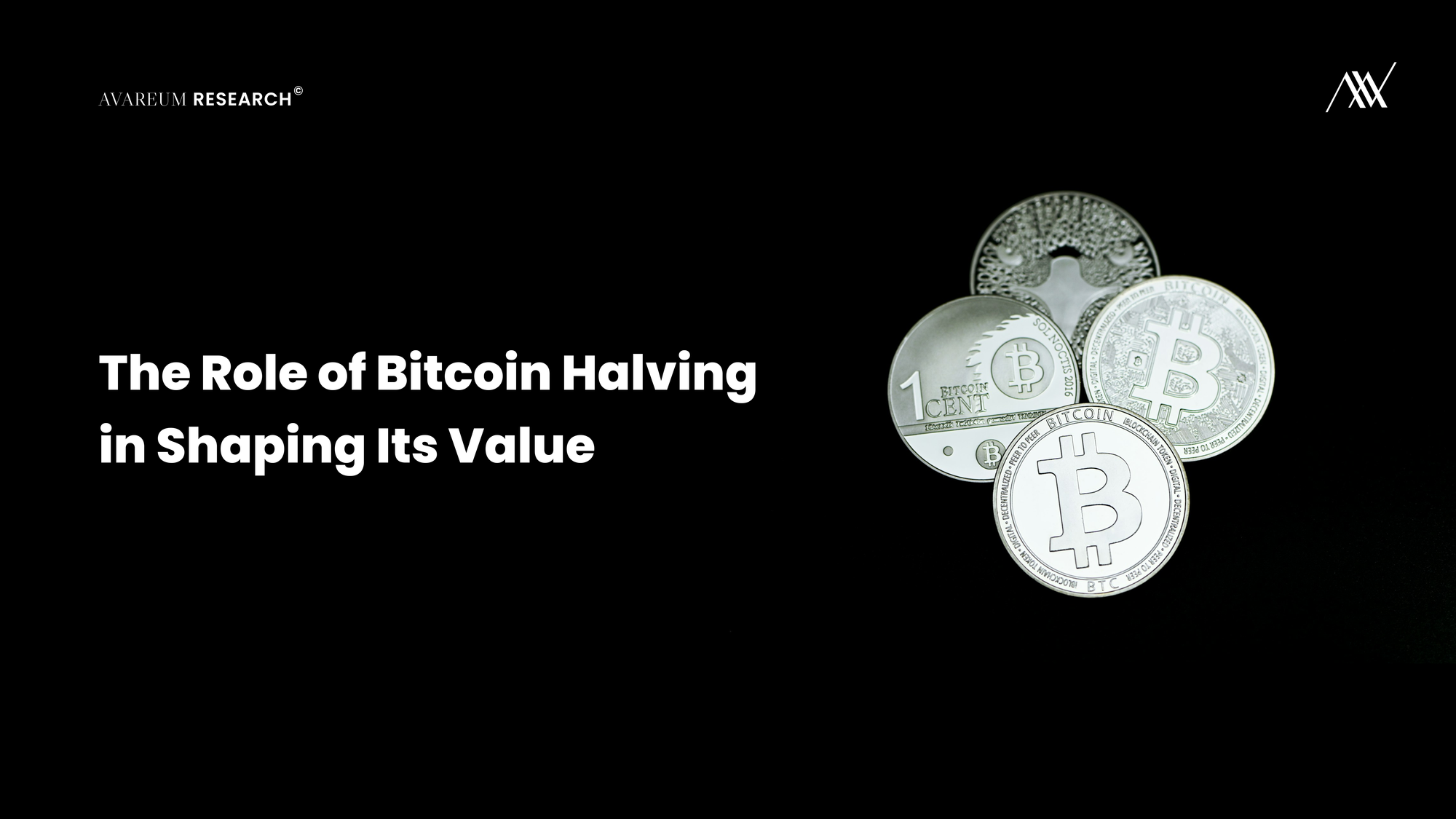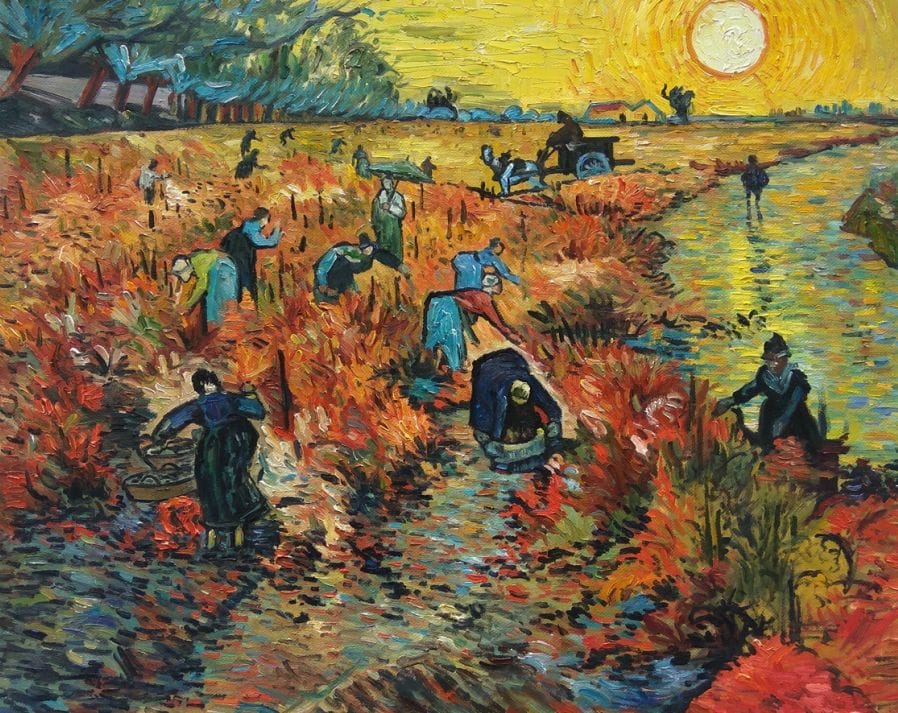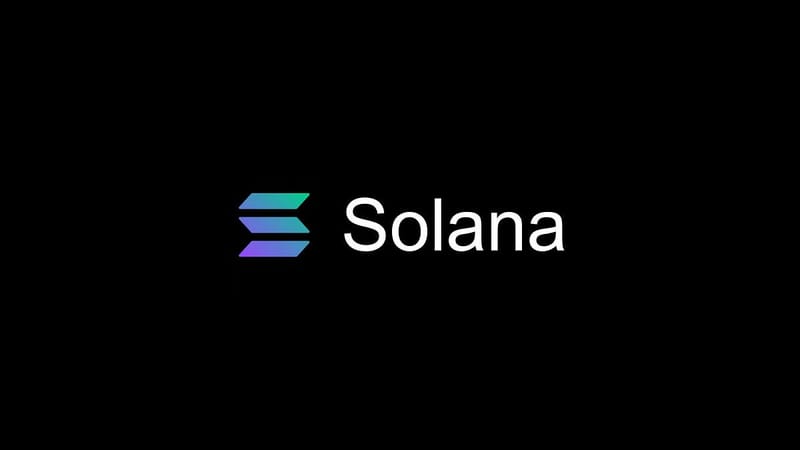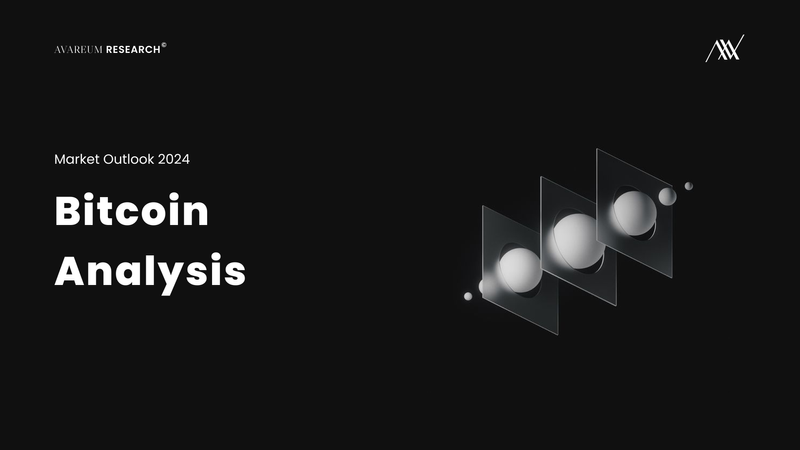The Role of Bitcoin Halving in Shaping Its Value

การที่ "สินทรัพย์จะมี value" ได้นั้นจะต้องมีจำนวนจำกัด (หรือเรียกอีกมุมว่า scarcity) และ trust
ทองคำในอดีต มีทั้ง scarcity และ trust

รูปภาพของ Van Gogh ในช่วงที่เค้ายังมีชีวิตนั้นมี scarcity แต่ก็ขายไม่ได้ราคา ไม่มีใครยอมซื้อเพราะขาด trust
แต่หลังจาก Van Gogh ตาย ยุคหลังรูปภาพของเค้ามี scarcity และก็มี trust ด้วย ราคาเลยพุ่งทะลุร้อยล้านดอลล่าร์ (ปรับตามเงินเฟ้อ)
ส่วนเงินดอลล่าร์ก่อนล้ม bretton woods ก็มีทั้ง scarcity (จากการอิงกับทองคำ) และ trust
ส่วนเงินดอลล่าร์ยุคนี้ มีปัญหาคือไม่ scarcity แล้ว (เพราะ QE หนัก แต่คนส่วนใหญ่ไม่รับรู้) แต่ trust ยังคงอยู่
ผมเคยเล่าให้ฟังว่าในยุคสมัยที่โรมันเรืองอำนาจ ทองคำถูกใช้เป็นสื่อกลางการแลกเปลี่ยน และเหรียญทองคำของโรมันถูกนำไปใช้แพร่หลายถึงประเทศอินเดีย
คนอินเดีย trust เหรียญทองคำจากโรมันมาก จนไม่ยอมใช้ทองคำของประเทศตัวเอง (ทั้งๆ ที่มันก็ทองเหมือนกัน) trust มากถึงขนาดไปทำเหรียญทองคำโรมันของปลอมออกมา คือใช้ทองคำจริง แต่ไปปั้มรูปกษัตริย์โรมันลงในเหรียญทองคำของอินเดีย เพื่ออยากให้คนเชื่อถือ..
ตัวทองคำเอง มี scarcity แต่เหรียญทองคำโรมัน กลับมี trust มากกว่าทองคำทั่วไป
คนอินเดียจึงให้ value เหรียญทองคำโรมัน มากกว่าทองคำอินเดีย
scarcity (ในบางสินทรัพย์) ก่อให้เกิด trust และ trust ก่อให้เกิด value
แต่ถ้า trust หาย value ก็หาย แม้ scarcity จะยังคงอยู่
แต่ถ้าคิดในแง่มุมกลับครับ สินค้าที่มีจำนวนไม่จำกัด จะยังคงมี value หรือไม่..?
ลองดูสินค้าจำพวก soft commodity อย่างข้าวโพด น้ำตาล กาแฟล่ะ
สินค้าเหล่านี้มีจำนวนไม่จำกัด เพราะปลูกเพิ่มได้เรื่อยๆ แต่กลับกันมี demand ความต้องการบริโภคอยู่เรื่อยๆ เช่นกัน ดังนั้น ถึงมันจะผลิตได้ไม่จำกัด แต่เมื่อ demand > supply มันก็จะมี value เสมอ
ดังนั้น value มันไม่ได้มาจากการที่มีจำนวนจำกัด หรือ limited supply เสมอไป
มันมี value จากการที่มี high demand ด้วย
limited supply but no demand >> no value
unlimited supply but high demand >> high value
พูดมายืดยาว ตัว Bitcoin เอง การ halving ช่วง Q2 นี้ จะทำให้ supply ใหม่ลดลงอีก คนก็เชื่อกันว่า เฮ้ย ขุดยากขึ้นเท่าตัว ราคาต้องพุ่งแน่
halving >> limited supply แต่สุดท้ายคำตอบว่าราคาจะวิ่งหรือไม่ ต้องมาดูว่า high demand มันมาจริงหรือเปล่า
ผมคาดการณ์ว่า halving รอบนี้อาจจะไม่เหมือนรอบก่อนๆ เพราะประเด็นคือ demand อาจจะจำกัด จากเม็ดเงินบนโลก ที่ไม่ได้คล่องตัวเหมือนยุคดอกเบี้ยต่ำ FED ก็ยังคงทำ QT เศรษฐกิจโลกก็ยังลุ่มๆ ดอนๆ
ส่วนตัวแล้วผมคิดว่ารอบนี้ราคา Bitcoin มีโอกาสแปรผันตาม money supply ของ FED มากกว่า halving และ Bitcoin อาจจะกลับสู่ภาวะกระทิง ในกรณีที่ FED ลดดอกเบี้ย และกลับลำมาเริ่ม QE ใหม่อีกรอบ
เหมือนเดิมครับ รอบนี้ผมไม่คิดว่า Bitcoin วิ่งทะลุ $100,000 ได้ แต่ก็หวังว่าผมจะคิดผิด
PS. ภาพประกอบคือภาพ The Red Vineyard เป็นภาพเพียงภาพเดียวที่ Van Gogh ขายได้ในช่วงชีวิตของเขาด้วยมูลค่าเพียง 400 ฟรังซ์ในปี 1890
In the realm of financial assets, two essential elements play a pivotal role in determining value: scarcity and trust.
In the past, assets like gold possessed both scarcity and trust. However, scarcity alone doesn't guarantee value. A prime example is the artworks of Vincent van Gogh during his lifetime. Despite their scarcity, they failed to command significant prices due to a lack of trust in the artist.
It was only after Van Gogh's passing that his works gained scarcity and trust. Their prices soared to over a hundred million dollars, adjusted for inflation.
Similarly, traditional currencies, such as the US dollar before the end of the Bretton Woods era, enjoyed both scarcity (tied to gold reserves) and trust.
Today's US dollar, however, faces a unique challenge. While it still enjoys trust, it no longer exhibits scarcity due to heavy quantitative easing (QE). Despite this, trust remains intact.
Historically, during the Roman Empire's heyday, gold was widely used as a medium of exchange. Roman gold coins gained immense trust among Indians, to the extent that they preferred Roman gold over their own, despite being essentially the same precious metal. This trust was so strong that counterfeit Roman gold coins were produced, bearing Roman rulers' images.
Gold itself possesses scarcity, but the Roman gold coins held more trust and thus more value to the Indian populace.
Scarcity in some assets fosters trust, and trust, in turn, enhances value. Loss of trust leads to loss of value, despite scarcity.
Conversely, when we look at commodities like soft commodities (e.g., corn, sugar, coffee), we observe that they don't possess scarcity. They can be produced continually. Yet, their value persists because of consistent demand. This highlights that value isn't solely determined by scarcity; high demand plays a crucial role.
limited supply but no demand >> no value
unlimited supply but high demand >> high value
Bitcoin, with its upcoming halving event in Q2, will reduce its supply further. Many believe this reduction in supply will drive up its price.
Halving >> limited supply, but the ultimate question remains: Will the price surge happen? It depends on whether there's a genuine surge in demand.
I anticipate that this halving event might not unfold as previous ones did. The critical factor to watch is demand, which could be constrained. The global money supply isn't as abundant as during the low-interest-rate era when the Fed engaged in quantitative easing (QE). The global economy still faces uncertainties.
In my personal assessment, I believe that the price of Bitcoin in 2024 could move based on the actions of the Federal Reserve (FED) in managing the money supply, rather than the traditional Bitcoin halving events. There is a possibility that Bitcoin may experience a resurgence in volatility if the FED decides to reduce interest rates and initiate another round of Quantitative Easing (QE).
In conclusion, I'm cautiously pessimistic about Bitcoin reaching over $100,000. But I hope to be proven wrong.
PS. The accompanying image is "The Red Vineyard," the only artwork by Van Gogh sold during his lifetime, fetching a mere 400 Francs in 1890, equivalent to a small fraction of today's value.
Disclaimer: Avareum Research is an independent crypto research firm committed to providing unbiased and informative content. While we strive for complete objectivity, it's important to note that the research industry is inherently complex and may be influenced by various factors. To ensure transparency, we disclose any potential conflicts of interest, such as financial sponsorships or investments in the crypto space. Ultimately, all research and analysis provided by Avareum Research is intended for informational purposes only and should not be considered financial advice. Please consult with a qualified professional before making any investment decisions.
© 2024 Avareum Research. All Rights Reserved. This article is provided for informational purposes only. It is not offered or intended to be used as legal, tax, investment, financial, or other advice.






